Indian architecture has evolved through centuries which is the result of socio-economic and geographical conditions. Different types of Indian architectural styles include a mass of expressions over space and time, transformed by the forces of history considered unique to India. As a result of vast diversities, a vast range of architectural specimens have evolved, retaining a certain amount of continuity across history. Indian architecture, belonging to different periods of history, bears the stamp of respective periods. Though the cities of Indus Valley provide substantial evidence of extensive town planning, the beginnings of Indian architecture can be traced back to the advent of Buddhism in India. India has seen a plethora of architectural styles which developed throughout its history and it has been evolving till date. There has been a plethora of architectural styles in indian culture, we will focus on popular architectural styles in this article.
Temple architecture

Hindu temple architecture as the main form of Hindu architecture has many varieties of style, though the basic nature of the Hindu temple remains the same, with the essential feature an inner sanctum, the garbha griha or womb-chamber, where the primary Murti or the image of a deity is housed in a simple bare cell. This chamber often has an open area designed for movement in clockwise rotation for rituals and prayers. Around this chamber there are often other structures and buildings, in the largest cases covering several acres. On the exterior, the garbhagriha is crowned by a tower-like shikhara, also called the vimana in the south. The shrine building often includes an circumambulatory passage for parikrama, a mandapa congregation hall, and sometimes an antarala antechamber and porch between garbhagriha and mandapa. There may be further mandapas or other buildings, connected or detached, in large temples, together with other small temples in the compound. The architectural principles of Hindu temples in India are described in Shilpa Shastras and Vastu Sastras. Ancient Indian temples are classified into three broad categories, i.e. Nagara or the Northern style, Vesara or Mixed style, and Dravida or the Southern style. Apart from the broad classification, regional areas also display their regional styles in temple architecture which are equally unique.
Mughal architecture
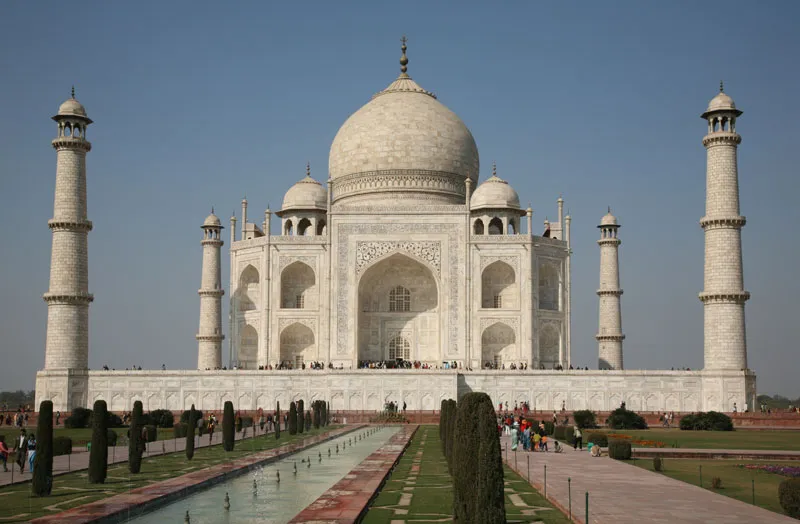
Mughal architecture, building style that flourished in northern and central India under the patronage of the Mughal emperors from the mid-16th to the late 17th century. The Mughal period marked a striking revival of Islamic architecture in northern India. Under the patronage of the Mughal emperors, Persian, Indian, and various provincial styles were fused to produce works of unusual quality and refinement. The tomb of the emperor Humāyūn (begun 1564) at Delhi inaugurated the new style, though it shows strong Persian influences. The first great period of building activity occurred under the emperor Akbar (reigned 1556–1605) at Agra and at the new capital city of Fatehpur Sikri, which was founded in 1569. The latter city’s Great Mosque (1571; Jami Masjid), with its monumental Victory Gate (Buland Darzawa), is one of the finest mosques of the Mughal period. Humayun’s Tomb, Akbar’s Tomb, Fatehpur Sikri, Red Fort at Delhi, Jami Masjid Delhi and the Taj Mahal at Agra are few examples of such structures.
Indo-Saracenic Revival Architecture
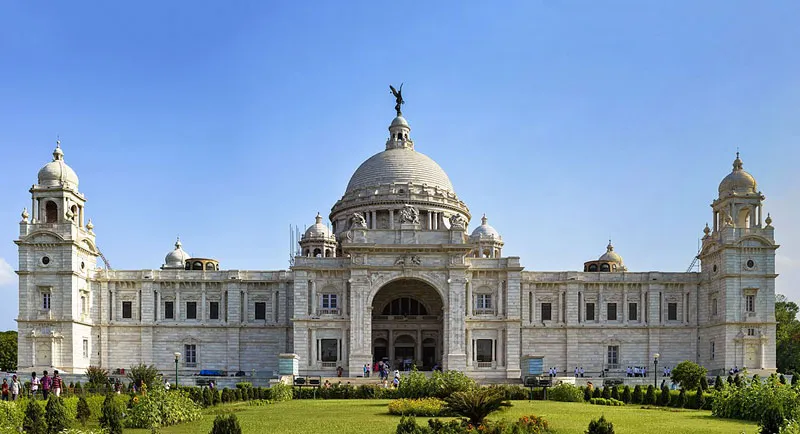
Indo-Saracenic architecture (also known as Indo-Gothic, Mughal-Gothic, Neo-Mughal, or Hindoo style) was a revivalist architectural style mostly used by British architects in India in the late 19th century, especially in public and government buildings in the British Raj, and the palaces of rulers of the princely states. The first Indo-Saracenic building is often said to be the Chepauk Palace, completed in 1768, in present-day Chennai (Madras), for the Nawab of Arcot. Bombay and Calcutta (as they then were), as the main centres of the Raj administration, saw many buildings constructed in the style, although Calcutta was also a bastion of European Neo-classical architecture fused with Indic architectural elements. This style of architecture drew stylistic and decorative elements from native Indo-Islamic architecture, especially Mughal architecture, which the British regarded as the classic Indian style, and, less often, from Hindu temple architecture. The basic layout and structure of the buildings tended to be close to that used in contemporary buildings in other revivalist styles, such as Gothic revival and Neo-Classical, with specific Indian features and decoration added.
Dravidian Architecture
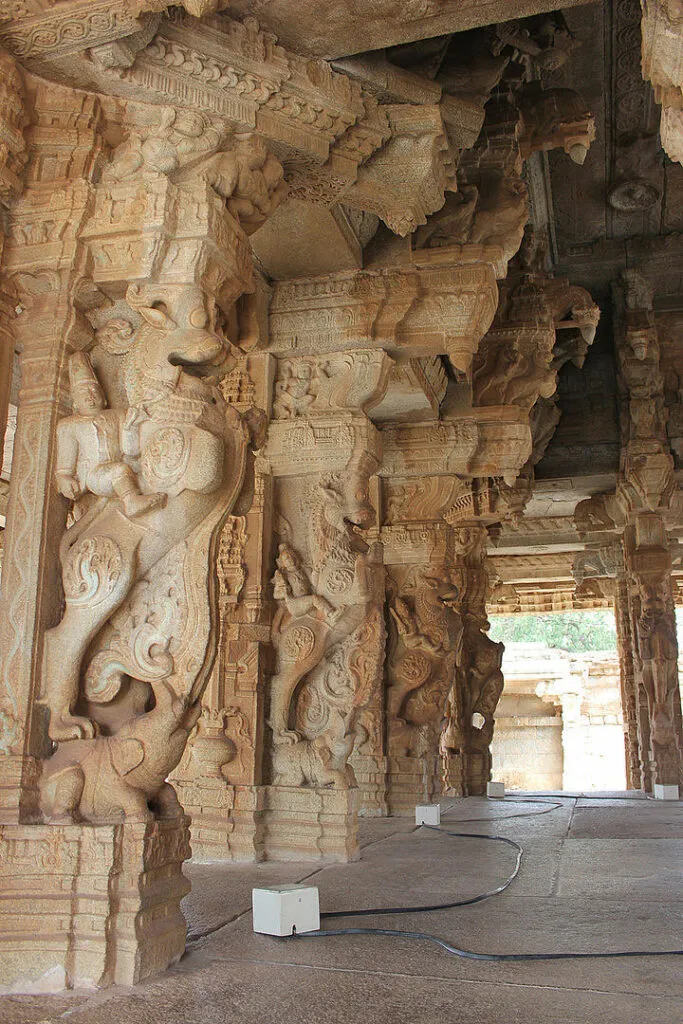
Dravidian architecture or the South Indian temple style is an architectural idiom in Hindu temple architecture that emerged in the southern part of the Indian subcontinent or South India and in Sri Lanka, reaching its final form by the sixteenth century. It is seen in Hindu temples, and the most distinctive difference from north Indian styles is the use of a shorter and more pyramidal tower over the garbhagriha or sanctuary called a vimana, where the north has taller towers, usually bending inwards as they rise, called shikharas. One of the distinctive feature of this form of architecture is te use of dwarapalakas – twin guardians at the main entrance and the inner sanctum of the temple and goshtams – deities carved in niches on the outer side walls of the garbhagriha. This form of architecture is mainly found in the Southern Indian states of Andhra Pradesh, Karnataka, Kerala, Tamil Nadu and Telangana. Various kingdoms and empires such as the Cholas, the Chera, the Kakatiyas, the Pandyas, the Pallavas, the Gangas, the Kadambas, the Rashtrakutas, the Chalukyas, the Hoysalas, and Vijayanagara Empire.
Kaḷinga Architecture
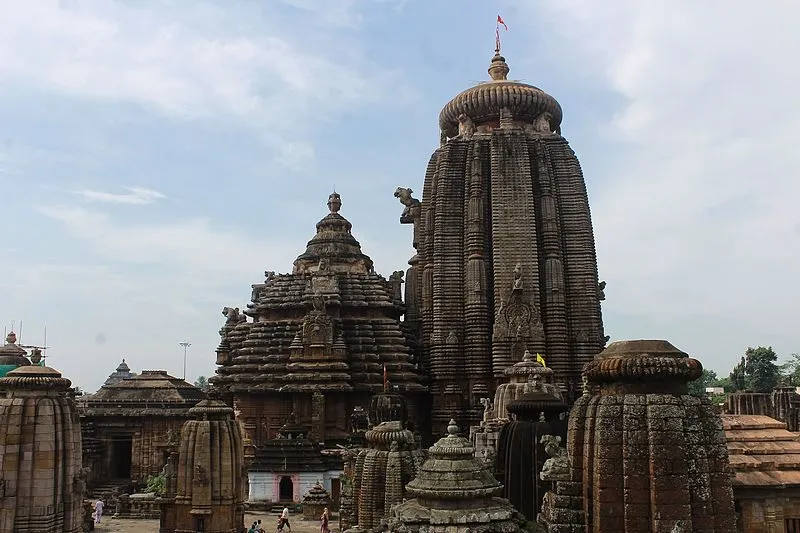
The Kaḷinga architectural style flourished in the ancient Kalinga previously known as Utkal and in present eastern Indian state of Odisha. The style consists of three distinct types of temples: Rekha Deula, Pidha Deula and Khakhara Deula. The former two are associated with Vishnu, Surya and Shiva temples while the third is mainly with Chamunda and Durga temples. The various aspects of a typical Kalinga temple include architectural stipulations, iconography, historical connotations and honoring the traditions, customs and associated legends. A typical Kalinga (Odishan) temple consists of two parts, a sanctuary where an idol or linga is placed and a hall where pilgrims can view the lord installed in the sanctuary. The sanctuary is referred to as deul while the hall is known as jagamohana. Early period temples were devoid of jagamohan. Kalinga architecture style is broadly classified into three main categories, namely Rekha, Pidha and Khakhara. Rekha-deul (temple) is distinguished with its square plan topped with a curvilinear tower. A Pidha-deul, also referred as Bhadra deul, also has a square plan topped with a pyramidal tower composed of horizontal tiers arranged in receding manner. A Khakhra deul is surmounted with a barrel-shaped (vault-shape) tower over a rectangular plan.
Sikh Architecture
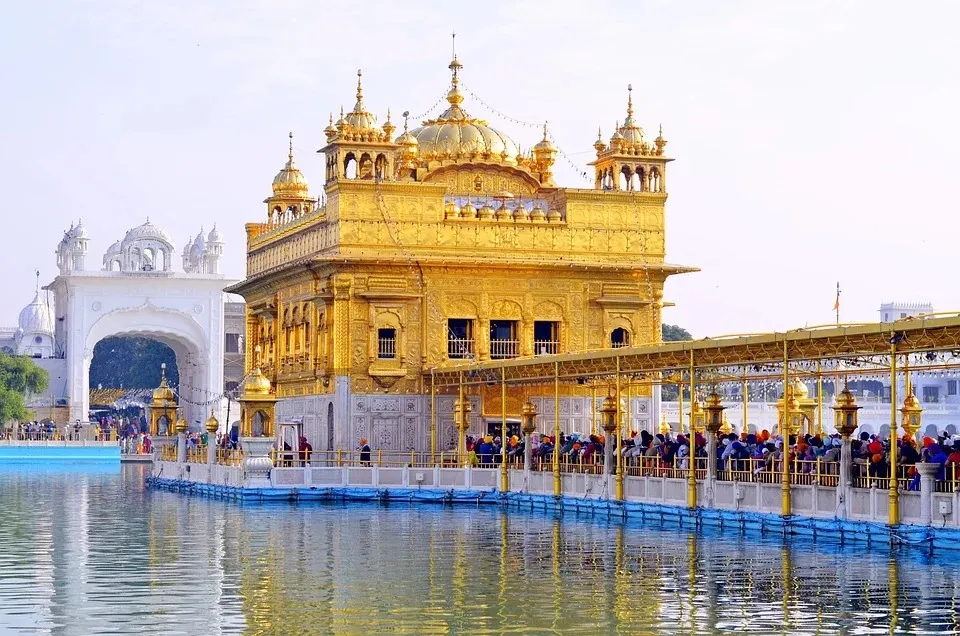
Sikh Architecture is a style of architecture that was developed under Sikh Empire during 18th and 19th century in the Punjab region. Due to its progressive style, it is constantly evolving into many newly developing branches with new contemporary styles. Although Sikh architecture was initially developed within Sikhism its style has been used in many non-religious buildings due to its beauty. Sikh Architecture is heavily influenced by Mughal and Islamic styles. The onion dome, frescoes, in-lay work, and multi-foil arches, are Mughal influences, more specially from Shah Jahan’s period, whereas chattris, oriel windows, bracket supported eaves at the string-course, and ornamented friezes are derived from elements of Rajput architecture. Apart from religious buildings, Sikh architecture includes secular forts, bungas (residential places), palaces, and colleges. The religious structure is called gurdwara (a place where the Guru dwells).
Vesara Architecture
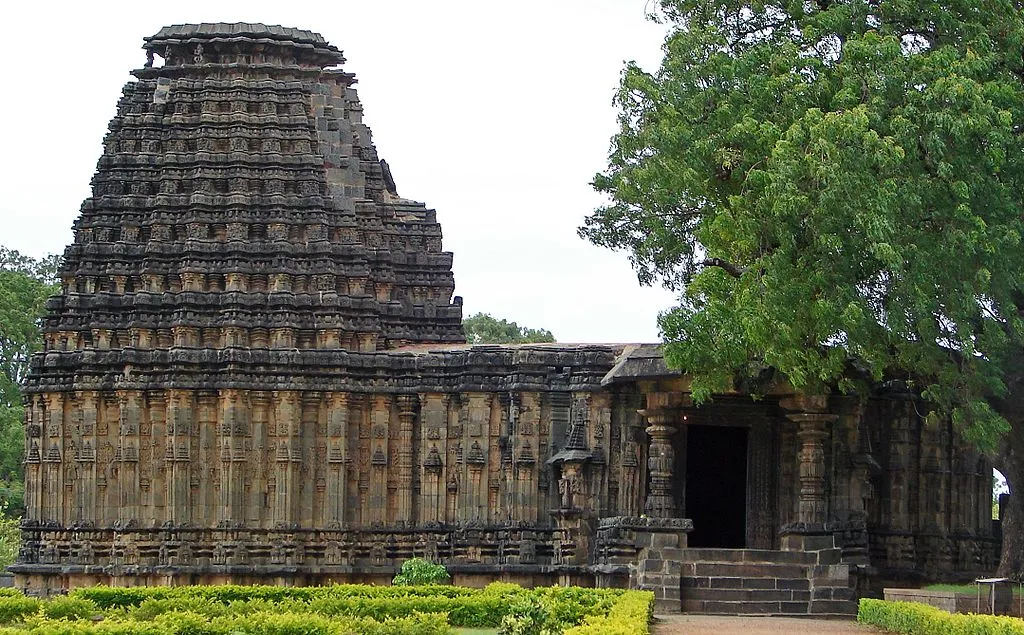
Vesara is one of a number of terms for a distinct stylistic tradition of Indian Hindu temple architecture primarily used in the Deccan, parts of North India and Central India. In particular the shape of the superstructure over the sanctum is usually pyramidal in profile, and shorter than the northern shikhara tower. In plan the walls and superstructure are broadly circular, or a straight-sided cone, though its geometry is based on rotating a square imposed on a circle. It has rather different decorations and motifs to either. One common motif is in fact miniature shikharas, often of the bhumija type, showing that the architects were well aware of northern styles. Vesara architecture is divided into storeys or steps, but there are more of them, and the kapota roof motif that is so common in contemporary southern vimanas. This style combines both the Dravida and the Nagara architectural styles.
Indian Vernacular Architecture

The term indian vernacular architecture in general refers to the informal building of structures through traditional building methods by local builders without using the services of a professional architect. It is the most widespread form of building. In India there are numerous traditional regional styles, although there is much in common with the styles of the Hindi belt in the north. Compared to Hindu temple architecture and Indo-Saracenic architecture there was traditionally much more use of wood rather than stone, though today brick and concrete are more typical, and Indian versions of Western styles dominate in recent buildings. This architecture can be broadly divided into three categories- Kchcha, Pakka and semi-Pakka. categories. Building material depends on location. In hilly country where rocky rubble, ashlar, and pieces of stone are available, these can be patched together with a mud mortar to form walls. Finer stonework veneer covers the outside. Sometimes wood beams and rafters are used with slate tiles for roofing if available. The roof is pitched to deal with the monsoon season and the house may sit on raised platforms, plinths or bamboo poles to cope with floods.
Rock-cut / cave architecture
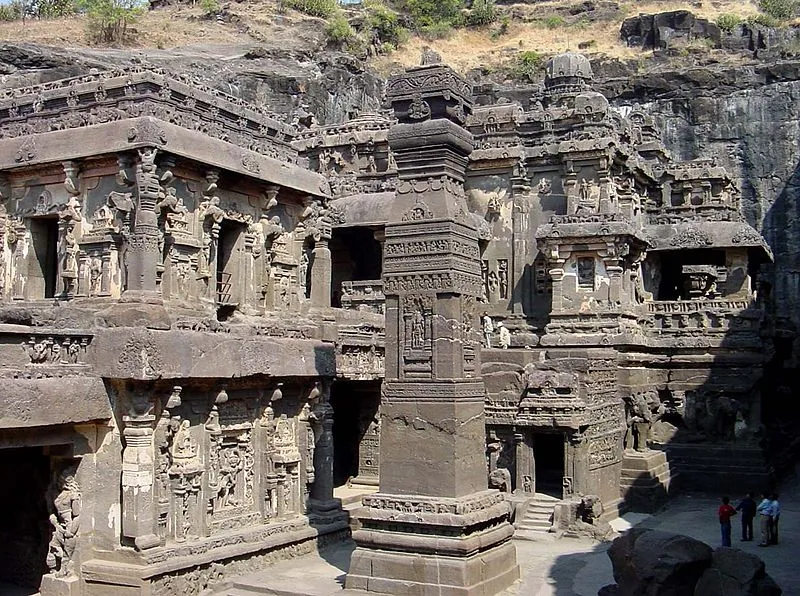
Indian rock-cut / cave architecture is more varied and found in greater abundance in that country than any other form of rock-cut architecture around the world. Rock-cut architecture is the practice of creating a structure by carving it out of solid natural rock. Rock that is not part of the structure is removed until the only rock left makes up the architectural elements of the excavated interior. Indian rock-cut architecture is mostly religious in nature. Caves were excavated out of rocks, as rocks are very durable as compared to other materials like wood or any structural building. They were used as (Varshavasa)residences for Buddhists monks during the rainy season and as a medium to propagate principles of different religions. Oldest rock-cut architecture is the Barabar caves, Bihar built around 3rd Century BC. Other early cave temples were used by Buddhist and Jain monks as places of worship and residence found in western India. Buddhist cave architecture reflected in the form of caves date back from 100 BC to 170 AD. At some places we see traces of wood being used and this indicates imitation of wooden construction of that period. The earliest cave temples include the Bhaja Caves, the Karla Caves, the Bedsa Caves, the Kanheri Caves and Ajanta Caves.
Colonial architecture
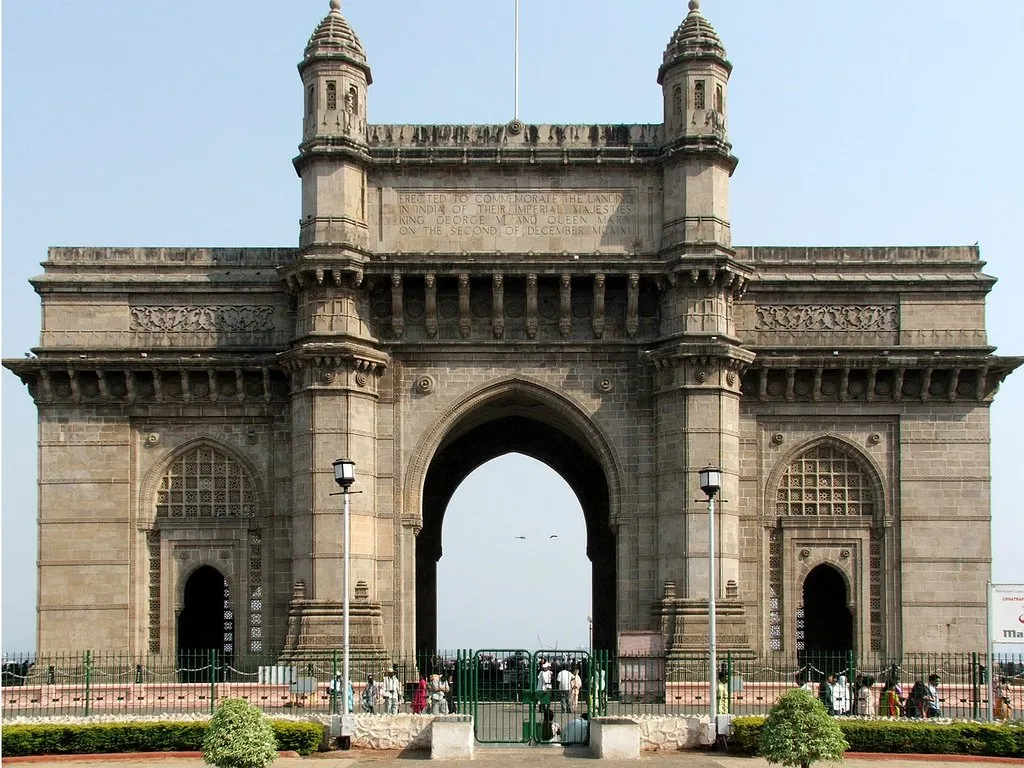
The colonial architecture in India can be seen in office buildings. Europeans who started coming from the sixteenth century AD constructed many churches and other buildings. Portuguese built many churches at Goa, the most famous of these are Basilica Bom Jesus and the chruch of Saint Francis. The British also built administrative and residential buildings which reflect their imperial glory. Some Greek and Roman influence can be observed in the colonnades or pillared buildings. Parliament House and Connaught Place in Delhi are good examples. The earliest architectural influences of the British colonial rule is seen on the churches. Gothic and neo-classical style was in rage and many of the structures in the Presidency of Bengal, Madras and Bombay became flag bearers of the opulent style of building. St. John’s Church, Fort William, Calcutta Cathedral in Kolkata or the Mutiny Memorial Church in Kanpur are some examples of the Gothic style of colonial architecture. Many cities have some or the other influence of colonial architecture. However, the cities that are landmarks of the British architectural history are Kolkata, Mumbai, Chennai, Agra, Delhi, Hyderabad, Nagpur and Bhopal.
Conclusion
The indian architectural style has gone through evolution and with growing technological advancements we are ready to embrace innovative architectural designs. The essence of architecture remains the same as the rich history of architecture in India.



